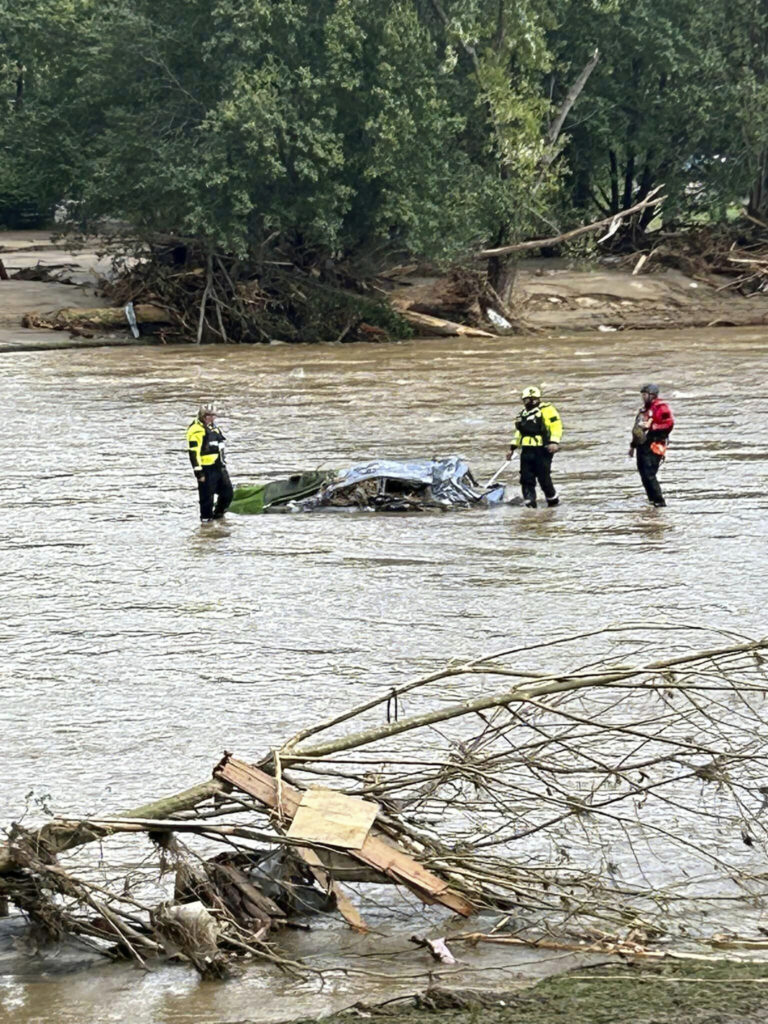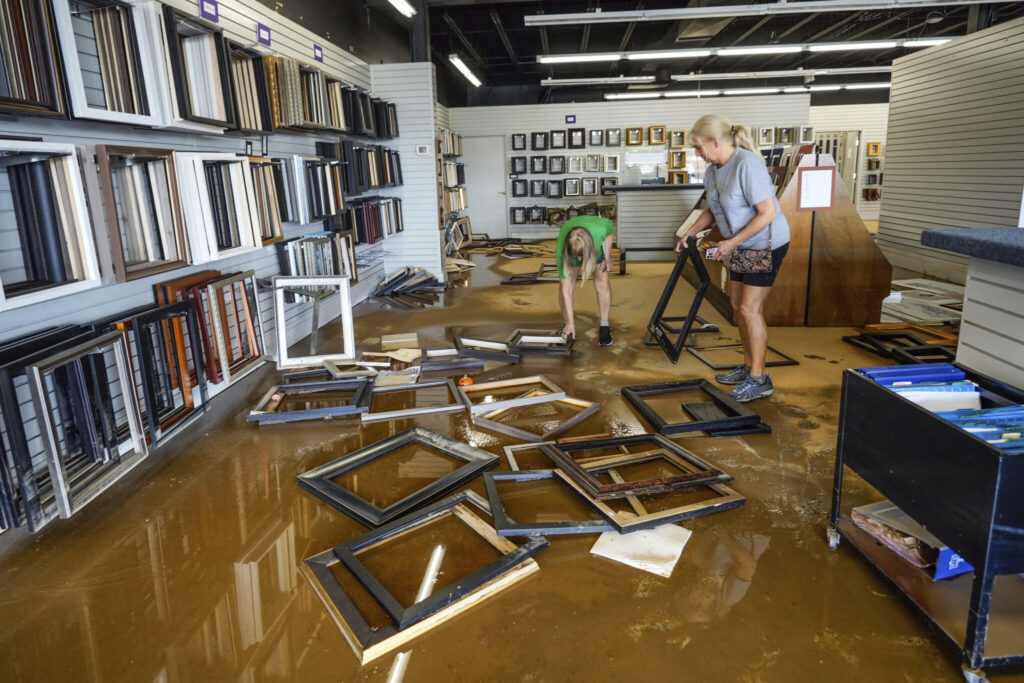Joe Biden/ Hurricane Helene/ North Carolina flood/ Asheville recovery/ presidential election/ FEMA response/ climate change hurricanes/ Newslooks/ ASHEVILLE/ N.C./ President Joe Biden is scheduled to visit the storm-stricken areas of Western North Carolina on Wednesday, where Hurricane Helene has caused widespread devastation. The death toll has climbed to 133, and emergency workers continue efforts to restore essential services and locate hundreds of missing people. Biden’s visit comes as local and federal officials scramble to respond to the extensive damage caused by the storm.

Hurricane Helene Devastation Quick Looks:
- Biden plans to visit Western North Carolina to survey Hurricane Helene’s damage.
- Helene’s death toll rises to 133, with hundreds still unaccounted for.
- Asheville’s water system has suffered catastrophic damage, complicating recovery efforts.
- Emergency workers struggle to restore power, communications, and provide aid to affected areas.
- Election officials across the South prepare for displaced voters in the upcoming election.
Biden to Survey Hurricane Helene Devastation as Death Toll Exceeds 130
Deep Look:
President Joe Biden will visit Western North Carolina on Wednesday to assess the destruction left by Hurricane Helene, which has devastated communities across the region. The death toll from the storm has risen to at least 133, with hundreds more still missing as emergency crews work around the clock to clear debris, restore power, and reopen roads.
Among the hardest-hit areas is the city of Asheville, a major tourism hub, where local officials have reported “catastrophic” damage to the water system. With many main roads washed away or blocked by mudslides, aid is being delivered by air, truck, and even mule to reach isolated communities. Residents are struggling with power outages, no running water, and limited communication. The situation has forced people to collect creek water and wait in long lines for drinking supplies.
Biden’s Visit and Government Response
Biden’s trip to the region is part of an effort to demonstrate the federal government’s commitment to helping North Carolina recover from the storm. The president will meet with local officials and tour some of the worst-hit areas, including Asheville, where 40 people have died. The Federal Emergency Management Agency (FEMA) is already on the ground, assisting with recovery efforts and providing temporary shelter for displaced residents.
Biden’s visit comes at a critical time, as election officials across the South race to ensure that voters displaced by the storm will still be able to cast their ballots in the upcoming presidential election. Emergency plans are being developed to address disruptions to polling places, power outages, and postal services in affected states like North Carolina, Georgia, and Florida.
Devastation Across the Southeast
Hurricane Helene, which made landfall as a Category 4 hurricane in northern Florida, has caused widespread damage across several states. In addition to the destruction in North Carolina, fatalities have been reported in Florida, Georgia, South Carolina, and Virginia, with officials warning that the road to recovery will be long and difficult.
Rainfall in some areas exceeded two feet, leading to record flooding and widespread devastation. Asheville and surrounding mountain towns were particularly hard-hit due to their valley locations, which made them vulnerable to flash floods and landslides. With the storm’s remnants stalled over the Appalachian region, the already saturated ground exacerbated the damage.
North Carolina Gov. Roy Cooper, who toured the Asheville area by helicopter, described the situation as “unprecedented,” adding that it would require an “unprecedented response” from local, state, and federal authorities. Cooper’s tour highlighted the need for immediate relief efforts as residents struggle with food and water shortages, damaged infrastructure, and the loss of life.
Struggles for Survivors
For survivors, the aftermath of Hurricane Helene has been an exhausting ordeal. Many communities are cut off from basic services, with no power, running water, or communication. In Asheville, residents like Elizabeth Teall-Fleming have been lining up at grocery stores, hoping to find non-perishable food items to prepare on camping stoves. Others, like Derek Farmer, are anxiously waiting for water to be restored after three days without it.
“The storm was worse than anyone expected,” Farmer said. “We knew it was going to be bad, but not like this.”
In addition to the devastation in North Carolina, Georgia Gov. Brian Kemp reported that most people around Augusta remained without power. In South Carolina, where at least 30 people have died, the storm has been declared the deadliest to hit the state since Hurricane Hugo in 1989.
Election Concerns and Preparations
With the presidential election fast approaching, election officials are scrambling to ensure that displaced residents can still vote. Karen Brinson Bell, the executive director of North Carolina’s State Board of Elections, said they are considering emergency measures for the hardest-hit counties, including provisions for voters unable to meet ID requirements due to the storm.
In Georgia, election officials have been working to restore operations despite widespread power outages. In some counties, poll worker training has been affected, and officials are working off reduced resources. Similar challenges are being faced in Florida, where election offices are coordinating with the U.S. Postal Service to ensure the smooth handling of mail-in ballots in areas impacted by the storm.
Why the Storm Hit North Carolina So Hard
Western North Carolina bore the brunt of Hurricane Helene’s destructive force due to the unique geography of the Appalachian region. As the storm’s remnants collided with the higher elevations and cooler air, rainfall intensified, causing severe flooding in the valleys where many towns like Asheville are located. The ground, already saturated before the storm, could not absorb the additional water, leading to massive flash floods and mudslides that wiped out roads, homes, and infrastructure.
Christiaan Patterson, a meteorologist with the National Weather Service, attributed the extreme flooding to climate change, noting that warmer waters have made hurricanes more intense and dangerous. “Helene rapidly intensified over the Atlantic, feeding off the warmer waters, which led to catastrophic conditions,” Patterson explained.
Looking Ahead
As recovery efforts continue, the immediate priority is ensuring that those affected by Hurricane Helene have access to basic necessities. Federal and state authorities are working closely with aid organizations to deliver supplies to remote areas. However, with many areas still without power and communication lines down, the full extent of the storm’s impact may not be known for some time.
Meanwhile, tropical storm Kirk has formed in the Atlantic, raising concerns about potential future threats. Kirk is expected to become a powerful hurricane by mid-week, though it currently poses no threat to land.







